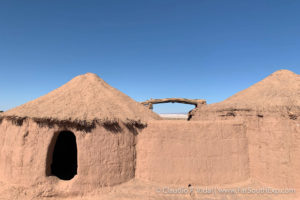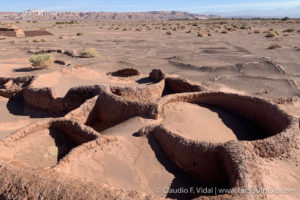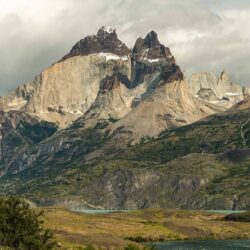The first remainings of the Tulor Settlement (Aldea de Tulor) were discovered in 1956 by Jesuit priest and accomplished archaeologist and ethnographer Gustavo Le Paige. This ancient village is located some 5 miles west of the town of San Pedro de Atacama and is one of the oldest archaeological sites of the whole of northern Chile. Located between the “ayllus” of Tulor and Coyo, the village comprise a series of interconnected circular structures (building foundations), which were used for various purposes to fit the productive living style of the natives, settlers rather than hunter-gatherers, living inside those structures. The village dates back some 2,300 years ago and the peak of its activity and use was between 100 and 300 A.D. The oldest part of the village is formed by rounded houses and shelters built using mostly clay; the array of buildings is easily seen from viewing platforms and there is a replica of a couple of buildings with an actual thatched roof.
Tulor Village | Exploring the Atacama Desert
Destinations around San Pedro de Atacama | Tulor village archaeological tour

The village of Tulor was the result of the collaborative work of skilled artisans and settlers who developed the typical polished brown-and-grey pottery, widespread in pre-Hispanic times around San Pedro de Atacama. The Licanantai people used many agricultural techniques and traded products and knowledge with several bands/tribes of the north-western regions of Argentina such as the Condorhuasi culture; this was before the prevailing and significant influx of the Tiwanaku culture.
The intensified trade and product exchange carried out by the early inhabitants of Tulor is demonstrated by the vast amount of archaeological debris, which is possible to observe nowadays, in the form of large amount of shell beads from the Pacific Ocean, ceramic and pottery and other goods reflecting the high degree of mobility of these populations and the important role of trade among the different tribes of the Central-South Andean region.

The retrieved archaeological materials from this valuable site are a proof of the highly developed cultural trade from that period. Most of the Andean cultures were highly connected during pre-Hispanic times, exchanging goods and materials such as clay, timber, bone and leather products as well as textiles.

Gallery
Back to Destination Highlights: Atacama Desert
Write or call for availability:
tours@farsouthexpeditions.com
+56 61 261-5793




















